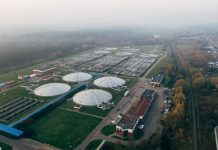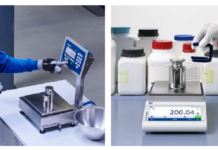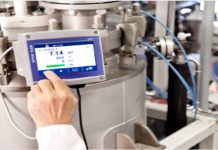Abstract
The chemical industry is currently at the point of needing to reduce its carbon footprint to meet its sustainable goals. The article examines how this sector is moving to more ecologically friendly resources, driven by the pursuit of lessening environmental harm, increasing energy efficiency, and more vigorously addressing climate change. The article investigates using biomass, waste gases CO2, and other feedstocks, emphasizing the tremendous growth in industry and recognizing the technical and economic challenges of adopting them. The article investigates market trends, technological advances, and the investment implications of making the change to cleaner resources. This analysis shows how the chemical industry can reduce its carbon emissions by a great deal and stimulate innovation within a circular economic model. However, the problem is whether this shift will be obstructed in such areas as ensuring a supply of resources, advancing conversion technologies, or integrating new materials into established systems. The paper underscores the need for policy offers such as forming alliances among policymakers, industry stakeholders and scientists investing in research and development initiatives and creating supportive regulatory frameworks. This joint effort will build efficiency and a more robust chemical industry to adhere to global climate goals and create a zero-carbon future.
Introduction
In today’s world, the chemical sector, which plays a significant role in manufacturing, is facing increasing pressure to reduce its environmental impact. Traditional raw materials sourced from oil contribute to greenhouse gas emissions and the exhaustion of natural resources. In response to these challenges, the industry is exploring sources such as biomass, waste materials and carbon dioxide to address these issues. This paper examines the opportunities, obstacles and strategies associated with transitioning to sustainable materials in the chemical sector.
Current Scenario
The chemical industry heavily relies on oil and gas as resources-accounting for 12% of primary crude oil demand and 8% of natural gas demand. Annually emitting an estimated 1.0 gigatons of greenhouse gases, it is the largest emitter after the iron/steel and cement industries. The abundance of hydrocarbons in oil makes it a preferred choice for producing chemical products like olefins, aromatics, and polymers. Despite the cost and availability benefits, relying heavily on oil impacts the environment and the economy. Extracting, refining, and burning oil and its derivatives releases CO₂ and other greenhouse gases into the atmosphere, worsening global warming and climate change.
Using Alternative Feedstock to Decarbonize
The chemical sector confronts a watershed moment as it strives to lower carbon dioxide emissions. Embracing alternative feedstocks is the way to get there. The industry can utilize the following feed materials sustainably to make valuable chemicals.
Turning Greenhouse Gases into Assets
Carbon dioxide, which is not to be discarded as a waste product of the production process, is finding its use as a valuable resource in the chemical industry. CO2 can be captured and converted from power plants, steel mills, cement factories, or the air. Methods such as electrolysis, methanation, and photosynthesis can convert captured CO2 into chemicals and polymers. CO2 can produce methanol, formic acid, ethylene, and polycarbonates.
Harnessing Biomass
Biomass is an all-encompassing term for material from plant and animal sources, including microorganisms. Biochemical or hybrid processors can convert it into energy, fuels, and chemicals. This process is of carbon neutrality or even of carbon deficit since CO2 is captured during plant growth stages. Biomass is an all-encompassing term for material from plant and animal sources, including microorganisms. Biochemical or hybrid processors can convert it into energy, fuels, and chemicals. This process is of carbon neutrality or even of carbon deficit since CO2 is captured during plant growth stages. We could produce chemicals and polymers from this versatile resource using methods like fermentation and gasification. This range of products made from biomass includes biofuels, bioplastics, bio-based solvents and so on, indicating biomass’s diverse applications and bio-based content.
Recycling and Reuse of Plastics
Reusing and recycling materials, such as plastics and fibres, can reduce reliance on resources, conserve natural resources, and decrease greenhouse gas emissions and waste generation.
Renewable Natural Gas
Renewable natural gas, such as biogas and landfill gas, acts as a green feedstock to the chemical industry. It’s a source of hydrogen needed for making chemicals like ammonia and Methanol.
Wastes
Waste materials like tyres and other rubber products can be turned into chemicals and polymers. They can undergo mechanical, chemical, or biological processes (e.g. depolymerization, pyrosis, or enzymatic digestion). Many examples of waste-to-product possibilities like monomers, olefins, and artificial fibres present broad applications. This emphasizes the potential to reuse waste as a raw material in the production of chemical products. A significant group of chemicals can be produced using sustainable resources.
Methanol
Methanol can be used as a fuel, a solvent, or a raw material for producing formaldehyde, acetic acid, and olefins. Methanol is produced traditionally from coal and natural gas through gasification or steam reforming. The traditional methods have a high carbon footprint. Biomass-based or carbon-capture-focused methods of methanol production have been seen as potential means to reduce greenhouse gas emissions. For example, BioMCN in the Netherlands produces Methanol from biomass through gasification. A second way to make Methanol from CO2 is through hydrogenation, in which CO2 and hydrogen (obtained from water electrolysis) reacts. The first large facility capable of converting waste CO2 and hydrogen into Methanol operates in Anyang, Henan province in China.
Olefins
Hydrocarbons like ethylene and propylene are essential precursors to plastics, synthetic rubber, and fibres. These basic materials are obtained from naphtha, ethane, propane, and coal through steam cracking, fluid catalytic cracking or methanol to olefins (MTO) conversion. These conventional methods are associated with high carbon footprints. However, in contrast, biomass-derived olefins could increase diversity and sustainability in raw materials. Olefins can be derived from biomass by gasification or pyrolysis. In the gasification process, biomass is converted into syngas for olefin manufacture, while pyrolysis produces bio-oil that can be refined into olefins. The Karlsruhe Institute of Technology (KIT) and its research partners have achieved a catalyst that converts CO2 and hydrogen into olefins.
Aromatics
Aromatic hydrocarbons, which are utilized as solvents, intermediates, or precursors for chemicals like benzene, toluene, and xylene, can be derived from sources such as naphtha, reformate, pyrolysis gasoline, coal, biomass, or CO2 through processes like reforming, steam cracking or aromatization. However, conventional methods often result in carbon emissions. Shifting towards using biomass or CO2 as feedstocks could help reduce these emissions. Biomass can be converted into compounds through pyrolysis, gasification, catalytic fast pyrolysis (CFP) or hydrothermal liquefaction (HTL), generating intermediates that can be further processed into chemicals. Successful demonstrations of biomass to aromatics conversion include projects like Anellotech’s Bio-TCatTM process. Despite the challenges in ongoing research in electrochemical reduction techniques, photocatalytic conversions and biotechnological approaches are unlocking the potential of using CO2 as a feedstock for producing aromatics. Recent advancements indicate a move towards adopting methods for chemical manufacturing utilizing innovations in chemistry, catalysis, and sustainable energy to tackle the urgent need to reduce carbon emissions in the chemical sector.
Market Dynamics of Decarbonization
The chemicals industry is being transformed as sustainability becomes a common goal. 66% of leading chemical consumers, like the automotive, food, and personal care sectors in the European Union, have committed to slashing their greenhouse gas emissions by more than half by 2030. Additionally, 37% are striving toward zero emissions by 2050. The industry is already looking at alternate feedstock and energy supply replacements like biogas, hydrogen, or electrical heating units.
This transition to feedstocks is expected to create a new era in manufacturing that sources, prepares, and converts these materials. Moreover, this transformation would revitalize unproductive plants and stimulate local economies. This will result in job creation and an increase in tax revenue.
Large companies are investing strategically in sustainable agricultural practices, which will help to provide the raw materials. A framework of regulations and policies plays a big part in advancing such practices. For example, Germany, which has Europe’s largest economy, is aiming for a cut in CO2 emissions of around 65% by 2030. In addition, businesses are securing supply chains and meeting market demand through long-term supply contracts designed to mitigate the challenges inherent to this transition.
Barriers to Decarbonizing the Chemical Industry : The path toward creating a chemical industry is filled with complex challenges and trade-offs requiring creative solutions and forward-thinking strategies. These obstacles range from sourcing eco-feedstocks to transforming and incorporating them into the chemical production processes.
Overcoming Challenges in Feedstock Availability: Exploring biomass or CO2 as alternative feedstocks face competition for resources from sectors like foodand agricultural sectors. Factors such as sustainability standards, which consider land use, water consumption, biodiversity conservation and socio-economic effects further limit their accessibility.
Tackling Complexities in Feedstock Conversion: Using materials like biomass or CO2 to create chemical materials and substances requires advanced and sophisticated technologies. Techniques such as gasification, fermentation, electrocatalysis and photocatalysis face challenges like output, higher costs and more energy needs compared to crude oil methods. According to research from the European Commission, the production expenses for Methanol derived from biomass or CO2 could be up to four times those from fuels by 2030.
Incorporating alternative feedstocks: Introducing alternative feedstocks into the current chemical production setup involves significant changes and investments. This involves creating reactors, pipelines, storage facilities and distribution networks, bringing economic and regulatory obstacles. The International Council of Chemical Associations estimates that transitioning the chemical industry to biomass or CO2 feedstocks may require investments ranging from $1.5 trillion to $4.5 trillion by 2050.
Strategies for Overcoming Challenges
Establishing Long-Term Agreements: Setting up agreements for a supply of materials can help manage uncertainties.
Focusing on Investments: Investing in areas with promising opportunities, such as technologies and infrastructure, is crucial.
Encouraging sustainable agricultural practices: Improving the sustainability of plant-based materials through environmentally friendly farming methods is essential.
Utilizing Carbon Capture and Storage (CCS): CCS technology does not only aid in cutting emissions. It also offers a fresh carbon source for use as raw material.
A Vision for the Future
Policymakers, stakeholders, and researchers need to work to advance the chemical industry.
For Policymakers: Creating regulations and incentives promoting collaboration across sectors and nations supporting research and innovation and ensuring the sustainability and availability of materials.
For Industry Stakeholders: Assessing opportunities and challenges investing in materials and technologies involving stakeholders and implementing principles of economy.
For Researchers: Researchers conduct research and practical studies, create assessment tools, collaborate across industries, and share findings to educate an audience. By addressing these obstacles through partnerships and cooperation efforts, the chemical sector can progress towards achieving its decarbonization objectives, contributing to a more sustainable future that is kinder to the environment.
Conclusion
In conclusion, the chemical industry is on the verge of transforming its production methods and resource usage toward practices with reduced carbon impact.
This significant step seeks to reduce the industry’s impact, improve energy efficiency, and support efforts to address climate change. However, managing this shift requires an approach from everyone involved supported by innovation, well-thought-out policies, and a solid dedication to sustainability. As the sector progresses in this direction, it does not aim to lessen its footprint but also discover fresh opportunities for development and creativity, leading towards a more sustainable tomorrow.
Disclaimer: The conclusions presented in this article are solely those of the authors and cannot be ascribed to Fluor Corporation and/or any of its subsidiaries.

































